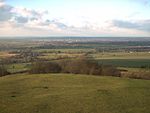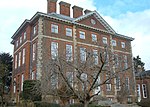North Marston
North Marston is a village and also a civil parish in the Buckinghamshire district in the ceremonial county of Buckinghamshire, England. It is located about three miles south of Winslow, and four miles north of Waddesdon. The village name 'Marston' is a common one in England, and is Anglo-Saxon for 'farm by a marsh'. This refers to the common state of the land in the Aylesbury Vale, where the water table is quite high. The prefix 'North' was added later to distinguish the village from nearby Fleet Marston. The population of the village is approximately 700 and there are about 280 houses. The facilities in North Marston include: a village hall, which was built as a war memorial after the First World War a pub called The Pilgrim (formerly, The Bell) that reopened on 1 May 2010 a recreation ground and sports field (that is shared with Granborough)A recent project within the village has re-created the sports field, which is now called the North Marston and Granborough Community Sports Field. In the field there is a pavilion, football pitch, running track, nature trail and cricket nets. There is a cricket team (North Marston & Granborough Cricket Club). A community shop in the village is now established. Construction work started on The Shop North Marston on 11 November 2010 and opened in June 2011. The village borders with Oving, Pitchcott, Quainton, Hogshaw, Granborough, Swanbourne and Hoggeston.
Excerpt from the Wikipedia article North Marston (License: CC BY-SA 3.0, Authors).North Marston
Church Street,
Geographical coordinates (GPS) Address Nearby Places Show on map
Geographical coordinates (GPS)
| Latitude | Longitude |
|---|---|
| N 51.897 ° | E -0.873 ° |
Address
Church Street
Church Street
MK18 3PT , North Marston
England, United Kingdom
Open on Google Maps









